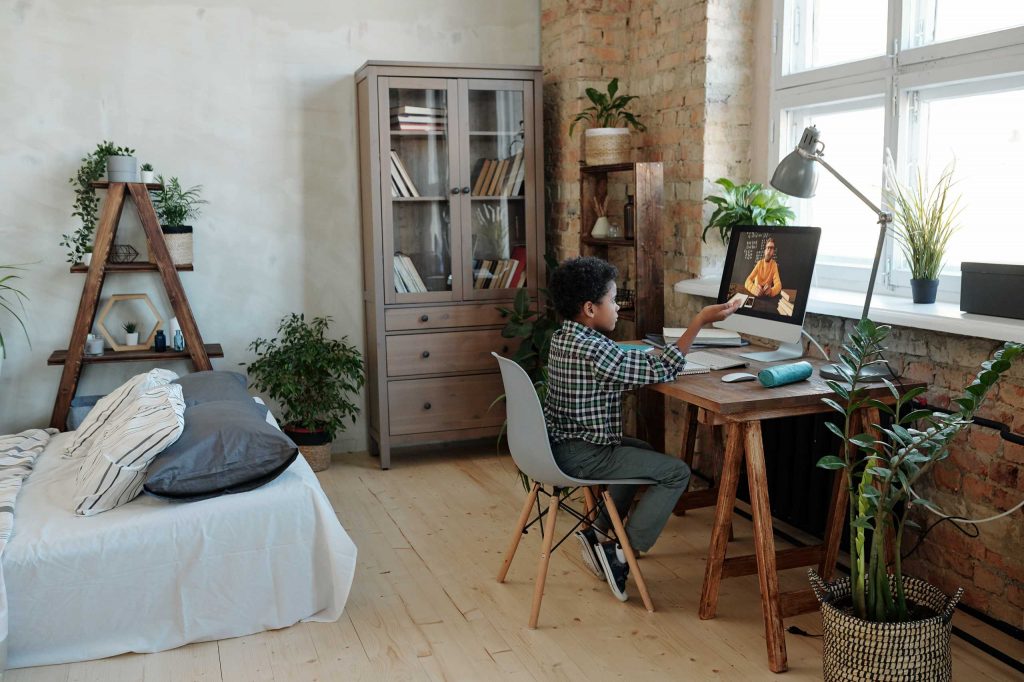When your dining table becomes your office, your bed turns into a conference seat, and your sofa doubles as a creative corner — your home starts to lose its identity. And so do you.
Zoning is the subtle but powerful practice of assigning clear purposes to different areas within your home — not necessarily by building walls, but by creating intentional borders that tell your mind: this is where we focus, this is where we unwind.
Let’s break down how zoning can change the way you live, work, and relax.
1. Why Zoning Works
We all move through different roles during the day — focused worker, relaxed partner, inspired creator, tired human. But when our space doesn’t reflect those shifts, we start to feel stuck in a fog of blurred purpose.
Zoning provides:
- Mental clarity — you know what happens where
- Routine support — your body gets into the rhythm
- Emotional relief — you’re not “always on”
Without zoning, burnout creeps in silently. With zoning, even the smallest apartment can feel structured, grounded, and alive with intention.
2. You Don’t Need Extra Rooms — Just Purpose
Forget the idea that you need a separate room for every activity. With the right approach, one room can hold multiple zones that feel completely different.
Here’s how:
a) Define Zones Visually
Use rugs, paint, lighting, or furniture placement to frame a zone. Even a bookshelf can act as a divider.
b) Use Posture to Your Advantage
Sit upright at your desk, lounge low in your reading nook. How your body engages with the space reinforces the role of that zone.
c) Assign Tools and Accessories
Only keep work tools in the work area. Add a candle, soft throw, or diffuser to a calm zone. Your senses should know where they are.
3. Types of Zones That Bring Balance
Let’s explore the zones your home might need — depending on your lifestyle:
• The Focus Zone
Minimal distractions. Natural or neutral lighting. Clean surface. This is where work gets done.
• The Unwind Zone
Soft seating. Warm light. Quiet colors. This is where tension dissolves.
• The Transition Zone
A hallway, entry space, or a chair with a view — any place that helps you shift gears between modes.
• The Inspiration Zone
A corkboard with ideas. A sketchpad nearby. A speaker for ambient music. Let your creativity live here.
You don’t need all of them — but even defining two clearly can dramatically change how you feel at home.
4. Mistakes to Avoid
- Blending everything into one area
When every task happens in the same space, none feel focused or restful. - Overdesigning zones with no real function
A space should serve a daily purpose. Don’t create “Instagram corners” that look good but don’t work for you. - Ignoring your personal rhythm
Early riser? Face your desk toward morning light. Night owl? Build your focus zone away from the bedroom. Listen to your natural energy.
5. Small Apartment? No Problem.
Even a one-room studio can hold:
- A bed zone with curtains or a foldable screen
- A work surface by the window
- A corner with a soft light and blanket for relaxing
- A rolling cart with supplies to move between zones
It’s not about square meters — it’s about making square meters speak to your needs.
6. How We Help You Build It
Inside the Work-Life Home Design course, we walk you through:
- Sketching your existing layout
- Identifying energy zones in your day
- Creating visual and functional separation
- Customizing zones for your lifestyle and habits
Plus, we show examples from real homes — big and small — to spark ideas and confidence.
Final Words: Design That Respects Your Time
Zoning isn’t about rules. It’s about respect — for your time, your focus, your need to rest.
When your space honors those needs through design, your life feels lighter, clearer, more aligned.
You don’t just get a home that looks better.
You get a home that works better — for you.

